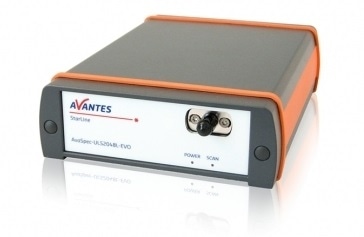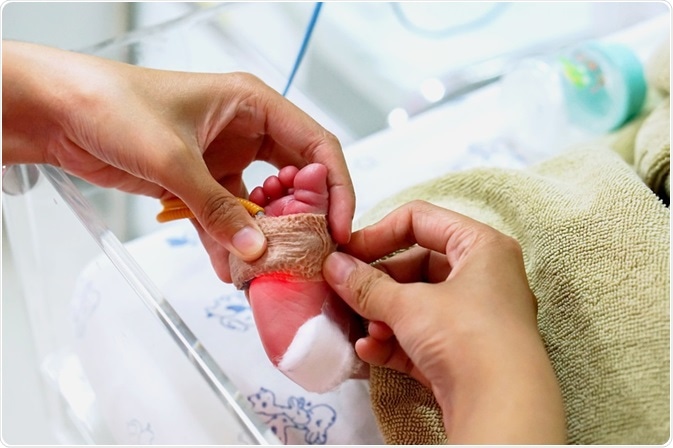Produced in Partnership with Avantes BVNov 20 2020
Within clinical instrumentation and life science research, optical spectroscopy and sensing have vital roles in several different areas.
Optical spectroscopy is a model means for real-time analysis and non-destructive sampling in the lab or in vivo. These applications have evolved rapidly recently in terms of the instrumentation they require, due to the advent of wearable diagnostic systems, the evolution of point of care devices, and the increase in demand for increasingly lower detection-limit systems.
The performance, cost, and size of instruments are of substantial importance for these applications and there are frequently mutually exclusive specifications. The fiber optic technologies enable microscale sampling of bodily fluids, tissues, and synthesized matrices used in life sciences and their importance cannot be understated.
This application note looks at the human life science applications of optical spectroscopy with emphasis on research, biotechnology, and clinical care.
Optical Spectroscopy in Clinical Care
Currently, the concept of a smart endoscopy or biopsy can indicate using an endoscopy or biopsy procedure for the extraction of further information from these invasive procedures to try to aid in diagnostic processes.

Image Credit: Avantes BV
In the future, the smart biopsy aims to become a minimally invasive and rapid diagnostic tool that can improve early detection and treatment of an assortment of diseases in the developing world and reduce the number of unnecessary traditional invasive biopsies when deployed in a clinical setting.
Smart endoscopies and biopsies can combine tissue reflection or fluorescence measurements within its hardware that performs these procedures. The extraction of the spectroscopic information during the procedure critically requires fiber optics.
These applications are demanding as they typically require both high sensitivity and high speed sampling. Avantes has used its AvaSpec-HS2048XL-EVO to support these applications with success. This instrument gives high-speed sampling capabilities and high sensitivity detection.
The instrument combines its high-sensitivity 0.22 numerical aperture optical bench with sophisticated electronics that enable sample acquisition as rapidly as in a few milliseconds.
Real-World Application Development for Smart Biopsy Technology
Globally, outcomes of cancer treatment can frequently be linked to early detection and treatment. Cancers such as cervical cancer, colorectal cancer, prostate, and oral cancers have all been research targets for the use of diffuse reflectance spectroscopy (DRS) for accurate and rapid cancer detection.

Image Credit: Avantes BV
Early detection and treatment have resulted in reduced fatality rates for epithelial cancers in the developed world. However, current DRS diagnostic equipment is bulky, expensive, demands a high-power output, and requires highly trained personnel.
These barriers have meant that these cancers have disproportionately high mortality rates in middle- and low-income countries due to a lack of diagnostic equipment. The development of a low-cost, portable, and most crucially, accurate diagnostic tool for epithelial cancer detection would save lives globally.

Image Credit: Avantes BV
In the last few years, research has been directed toward overcoming the intrinsic challenges that bringing a reliable portable DRS system into reality faces.
Two of these challenges are the absence of a reliable way to execute real-time calibration in the field, and the inability to standardize the pressure applied to the probe when tests are performed manually. Both of these are potential sources for significant user error and carry the potential to cause significant variations to test results.
A potential solution involved the integration of a self-calibrating channel displaying a novel probe design where an optical pressure sensor added to the probe tip only allows data capture when probe pressure falls within a predefined range.
The need for advanced operator training is reduced due to the self-calibration features and pressure sensor, and efficacy and accuracy of clinical deployment are improved (Yu et al. 2014).
The system created for this research comprised a smart fiberoptic probe with a pressure sensor that incorporates a self-calibration channel and a tissue-sensing channel, paired with high-powered 850 nm LED and white LED light sources, and a three-channel AvaSpec-2048 series array spectrometer and computer with Matlab and LabView software programs for analysis.
Two visible channels (A & B) with a resolution of 1.8 nm and covering wavelength range 400-635 nm are coupled to the white LED and used for self-calibration (SC) and Diffuse Reflection Spectroscopy (DRS). Channel C, with a 0.23 nm resolution and covering the NIR range from 750-932 nm, was paired to the 850 nm LED and used for the optical pressure sensor.

Image Credit: Avantes BV
Traditionally, colorectal cancer is detected and identified via visual inspection through endoscopy using white light. Typically, colorectal carcinoma develops through foreseeable stages of neoplastic transformation which result in adjustments to the transformed cells’ optical characteristics.
When using traditional white light endoscopy, early stages of cellular defects in the mucosal lining are undetectable, while fluorescence spectroscopy is a uniquely sensitive tool that can detect early variations to the physical properties of abnormal cells (Horak 2006).
Subject to the cellular environment, spectral features may show an autofluorescence response that shifts from 510-560 nm in healthy cells toward the red at 630-690 nm relative to the concentration of malignant tissues.
The AvaSpec-2048 (now replaced by the AvaSpec-ULS2048CL-EVO) is the model system designed for this research application, measuring 560-800 nm with a directly attached filter holder.
In other studies, NIR spectroscopy is applied using a dual-channel spectrometer system consisting of the AvaSpec-NIR256-2.5-HSC NIRLine and AvaSpec-ULS2048L spectrometers to identify biomarkers for oral cancer in saliva (Hurskainen 2019).
Researchers from Iran and the Netherlands employed the AvaSpec-2048-USB2 (now superseded by the AvaSpec-ULS2048CL-EVO) spectrometer with the AvaLight-Hal-S halogen light source in another study to carry out single fiber reflectance spectroscopy for identification of cervical premalignancy.
This methodology is non-invasive and is a promising step in reducing the number of unnecessary biopsies (Tabrizi 2013).

Image Credit: Avantes BV
Blood perfusion is the blood volume flow through a given mass or volume of tissue. It can be measured in units of ml/100 g/min or ml/ml/sec, which represents the amount of local blood flow through extracellular spaces in the tissue and the capillary network.
When determining normal and pathological physiologies, this parameter is an important medical diagnostic procedure. For example, the viability of a tissue transplant demands satisfactory post-operative blood perfusion.
Diffuse Correlation Spectroscopy (DCS) is a technique that can be used to measure blood perfusion by treating scatter of emitted photons as a function of cell motion within a target volume (Bi et al. 2015).
This method shows potential for wearable spectroscopy systems for which tissue health is monitored in real-time. The AvaSpec-Mini2048CL is a model candidate for this sort of system.
Pulse Oximetry
Pulse oximetry technology is widely beneficial to anyone in a medical setting, using a fingertip measurement to provide an accurate, painless, real-time measurement of pulsatile arterial blood levels.
Most of these devices comprise two LEDs, one at 650 nm (visible) and the other at 950 nm (near-infrared), and two sensors that combine to measure the oxygen absorbance (SPO2) from the oxyhemoglobin and deoxyhemoglobin ratios.
Full spectroscopic sampling and analysis are not essential, but spectrometers are regularly used in the qualification and validation of these devices and their subcomponents.
Taking into account this measurement’s high-speed sampling requirements, the Avantes AvaSpec-ULS2048Cl-EVO is perfect for the application due to its 2kHz sampling rates and 30 microsecond integration times.
Co-Oximetry - Blood Gas Analysis
Co-oximetry is the spectroscopic technique in which quantitative measurements of blood parameters are gathered. These parameters are oxygenated hemoglobin (oxyHb), carboxyhemoglobin (COHb), deoxygenated hemoglobin (deoxy-Hb), and methemoglobin (MetHb) and are taken as a percentage of the total hemoglobin concentration in a blood sample.
While pulse oximetry is a measure of oxygenated hemoglobin as a percentage of total hemoglobin, Co-oximetry distinguishes and quantifies every type of hemoglobin.
Traditionally, a spectrometer is used to measure these blood gas parameters via transmission/absorbance from 380 to 780 nm. This application also requires thermal stability specifications and exceptionally low stray light within its instrumentation.
The AvaSpec-ULS2048CL-EVO and its subcomponent optical bench, the Avabench-75-ULS2048CL-U3 have successfully been implemented by Avantes into clinical devices for this application. The novel AvaSpec-Mini2048CL is also a model candidate for this application.
Diffuse Reflection
Researchers at the University of CA at Irvine Beckman Laser Institute used near-infrared spectroscopy to identify and monitor the reduction of cancer mass during chemotherapy treatments and further for the characterization of specific histological features to predict treatment response.

Image Credit: Avantes BV
Sensitivity is fundamentally required by diffuse reflection spectroscopy measurements. The AvaSpec-HS2048XL-EVO high sensitivity spectrometer was developed by Avantes specifically for these types of applications.
This instrument includes a 0.22 numerical aperture (NA) optical bench and significant pixel detector which provides for the full collection of the light taken in by a fiber optic of the same NA.
References and Further Reading
- Bi, Renzhe, et al. "Optical methods for blood perfusion measurement—theoretical comparison among four different modalities." JOSA A 32.5 (2015): 860-866.
- Horak, L., et al. "Auto-fluorescence spectroscopy of colorectal carcinoma: ex vivo study." Journal of Optoelectronics and Advanced Materials 8.1 (2006): 396.
- Hurskainen, Miia. "Attempt to Reliably Identify Oral Cancer Salivary Biomarkers Using Near-Infrared Spectroscopy and Savitzky-Golay Algorithm." DEStech Transactions on Engineering and Technology Research icicr (2019).
- Santoro, Ylenia, et al. "Breast cancer spatial heterogeneity in near-infrared spectra and the prediction of neoadjuvant chemotherapy response." Journal of biomedical optics 16.9 (2011): 097007.
- Tabrizi, Sanaz Hariri, et al. "Single fiber reflectance spectroscopy on cervical premalignancies: the potential for reduction of the number of unnecessary biopsies." Journal of biomedical optics 18.1 (2013): 017002.
- Yu, Bing, et al. "Diffuse reflectance spectroscopy of epithelial tissue with a smart fiber-optic probe." Biomedical optics express 5.3 (2014): 675-689.
About Avantes BV
Avantes is a leading innovator in the development and application of miniature spectrometers. To meet our customer’s application needs, Avantes continues to develop and introduce new instruments for fiber optic spectroscopy. Avantes instruments and accessories are also deployed in a variety of OEM applications and a variety of industries in markets throughout the world. With more than 18 years of experience in fiber optic spectroscopy and thousands of instruments in the field, Avantes is eager to help our customers find their Solutions in Spectroscopy®.
Techniques supported
- UV-VIS/NIR spectroscopy
- Process control
- Absorbance/transmittance/reflectance
- Laser-induced breakdown spectroscopy
- CIE color spectroscopy
- Portable spectrometers
- Fluorescence spectroscopy
- Custom applications
- lrradiance
- Raman spectroscopy
- OEM application development
Major products/services
Low-cost. high-resolution, miniature fiber optic spectrometers: System solutions and OEM instruments for applications from 185 nm to 2500 nm. Detector choices: PDA, CMOS, CCD, back-thinned CCD, and lnGaAs.
Optical benches with focal lengths of 45, SO or 75 mm; revolutionary new ultra-low straylight optimized optical bench (ULS) and a new high sensitivity optical bench.
Other features
- 14 and 16 bit AID converters
- TE cooling
- multi-channel instrument configurations enabling simultaneous signal acquisition
- USB2 communication support for multiple instruments from a single computer
- 14 programmable digital I/O ports
Standard application solutions
- lrradiance and LED measurements
- gemology
- hemometric analysis
- thin-film measurement
- color
- fluorescence
- laser-induced breakdown spectroscopy (LIBS)
- Raman spectroscopy
- process control
Light sources
- Tungsten-halogen
- Deuterium
- LED
- Xenon calibration sources for wavelength and irradiance
Sponsored Content Policy: AZO Life Science publishes articles and related content that may be derived from sources where we have existing commercial relationships, provided such content adds value to the core editorial ethos of AZO Life Science, which is to educate and inform site visitors interested in medical research, science, medical devices, and treatments.